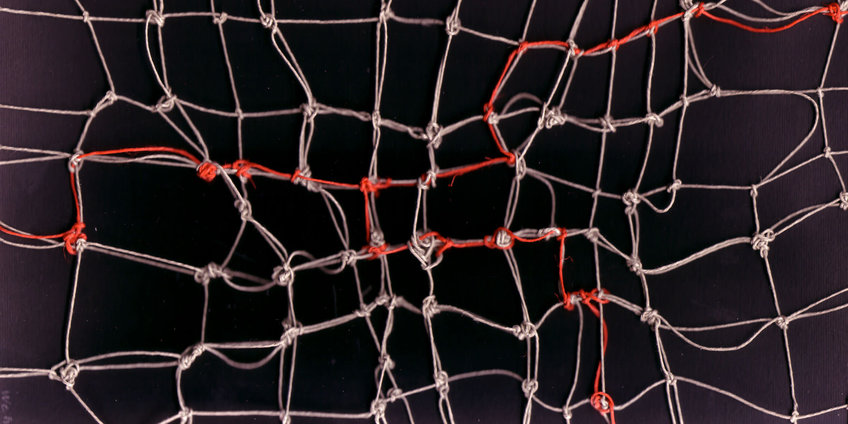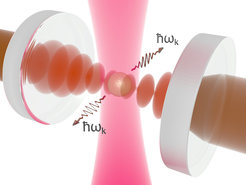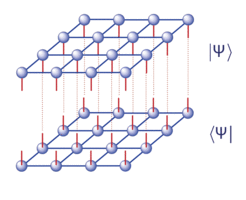
Theory
Director: Prof. Dr. J. Ignacio Cirac
The quantum world of atoms, molecules, and photons is plagued by strange and paradoxical phenomena that challenge all our intuitions. For example, these microscopic particles can tunnel through classically forbidden regions, behave as if they were in several places at the same time, or develop strange correlations even if they are separated by a long distance and no physical action is interchanged between them. None of these phenomena exist in our macroscopic world, but they are routinely observed nowadays in many laboratories that deal with microscopic objects. In fact, if we could control and manipulate these objects, we would be able to construct devices which would perform tasks that would otherwise be impossible. In particular, a new information era would emerge since new methods of processing and transmitting information could be exploited.

In the theory division we investigate new possibilities of controlling the world of atoms, molecules, and photons, and explore how to exploit their quantum mechanical behaviour in order to process and transmit information in more efficient and secure ways. We also develop theoretical tools to describe many-body quantum systems, and participate in the creation of a new theory of information based on quantum mechanics.

Quantum computers based on trapped ions or neutral atoms, as well as quantum repeaters that utilize photons emitted and absorbed by atoms in cavities or atomic ensembles at room temperature, are examples of proposals born in our group in collaboration with other international partners. We have introduced the possibility of studying quantum phase transitions and performing quantum simulations by means of atoms in optical lattices, or ions in different trap set-ups.
Our group is also developing methods for describing how to process and transmit quantum information. We have created new theoretical tools to characterize and quantify entanglement, an intriguing property of quantum mechanics which is responsible for most of its fascinating phenomena and applications. And we have used these techniques to develop sophisticated methods that allow us to describe many-body quantum systems in completely new ways. These methods have not only given rise to very powerful numerical algorithms for studying quantum systems, but also have application in other branches of physics.

